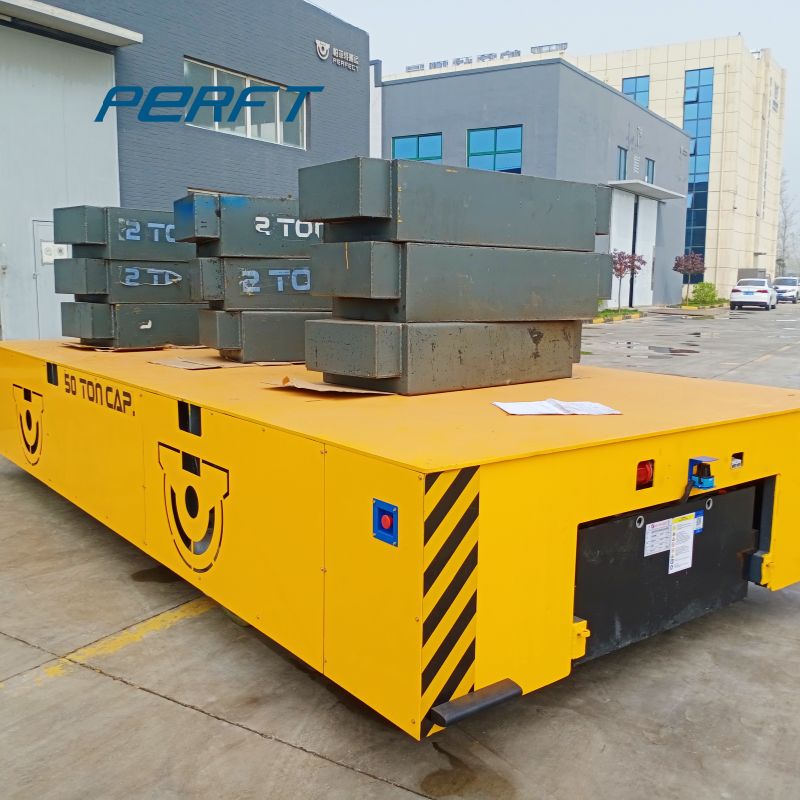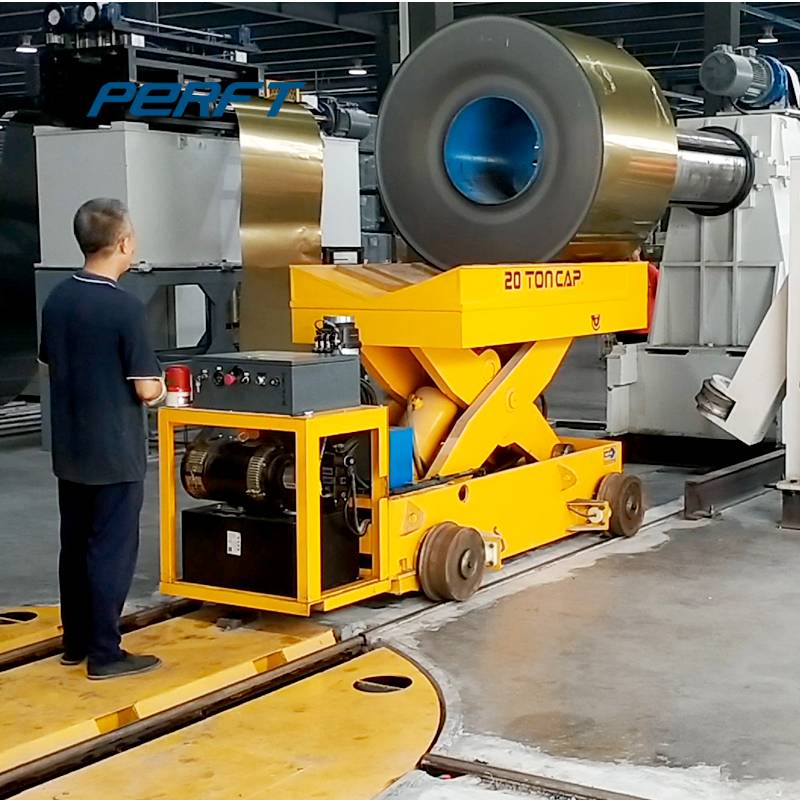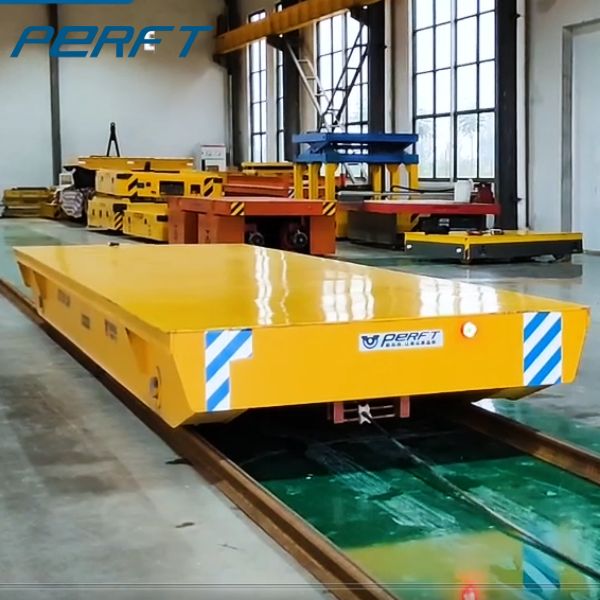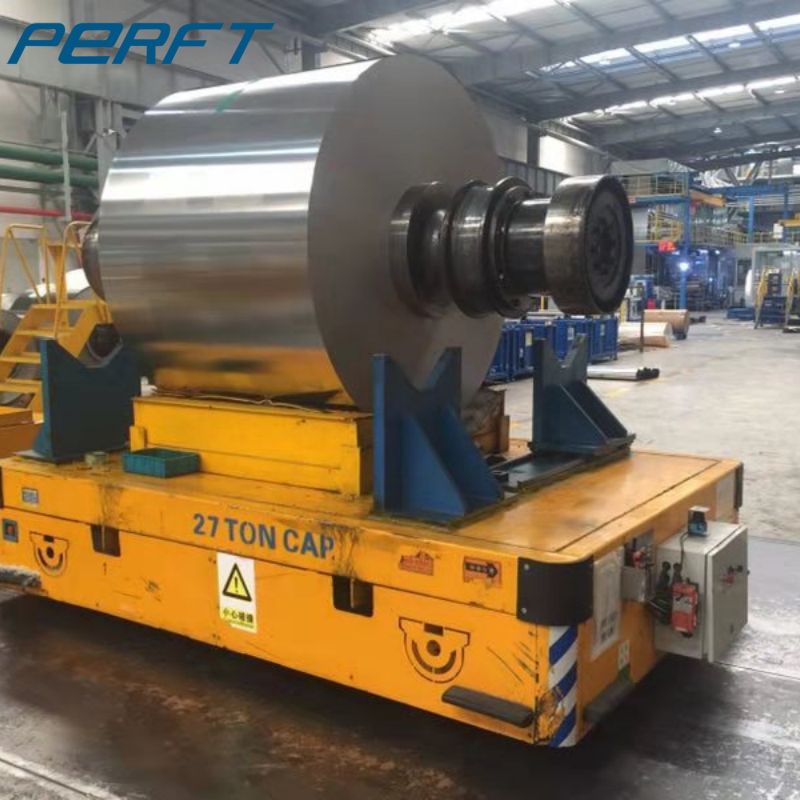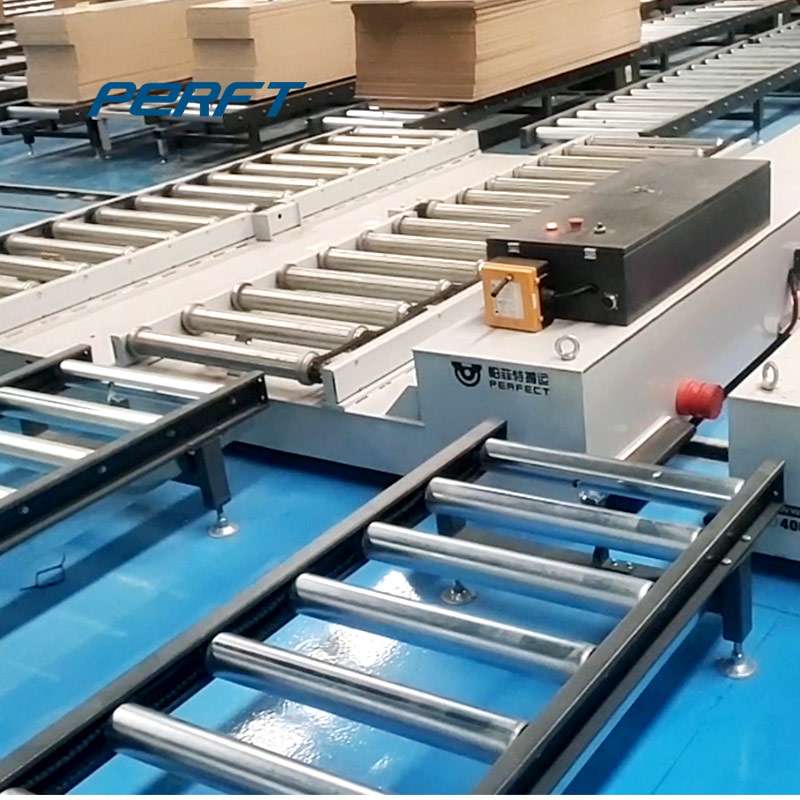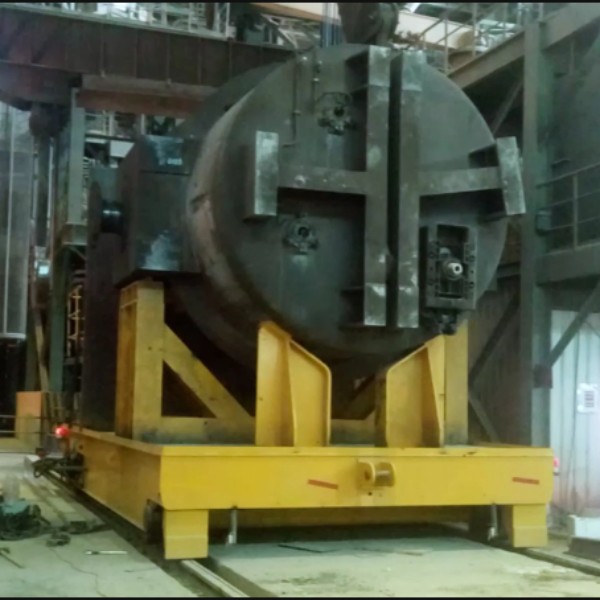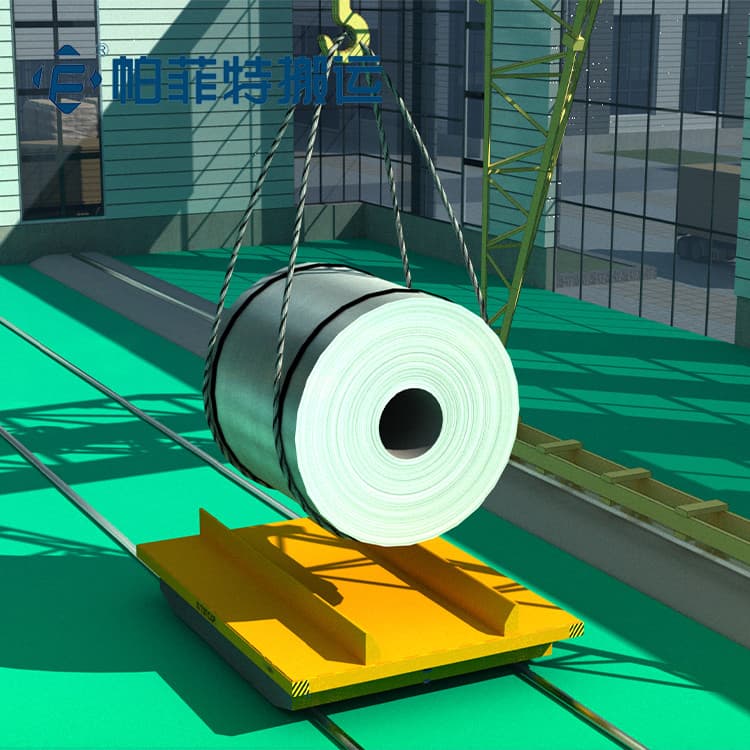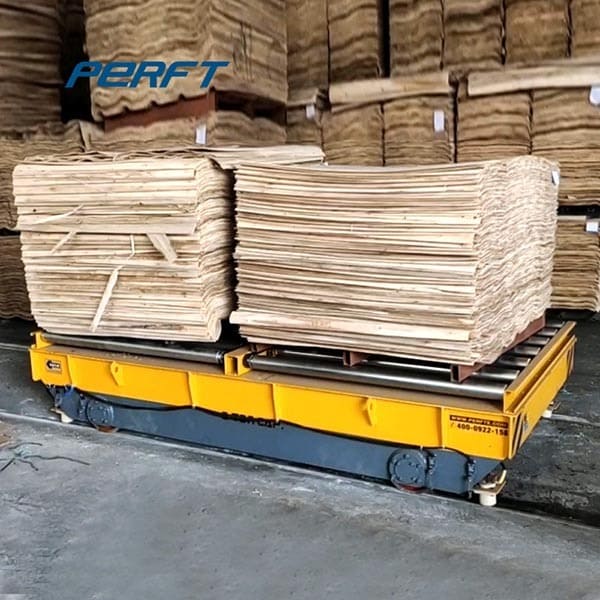Trailing Cable Powered Transfer Cart: Advantages, Disadvantages and Applicable Scenes
Advantages of Trailing Cable Powered Transfer Cart
Strong Load Carrying Capacity
Trailing cable powered transfer cart is capable of carrying large weights of goods. Its design structure allows it to steadily transport several tonnes or even tens of tonnes of raw materials, parts, or finished products. For example, in heavy machinery manufacturing factories, large machine tool parts can easily be carried, providing a strong guarantee for material handling in the production process.
Stable Operation
Running along the track ensures smooth operation. The track plays a good guiding role for motorized transfer cart, so that rail transfer trolley will not be shifted or shaken in the transport process. Especially when transporting precision instruments or fragile goods, this stability can effectively prevent the goods from being damaged due to bumps.
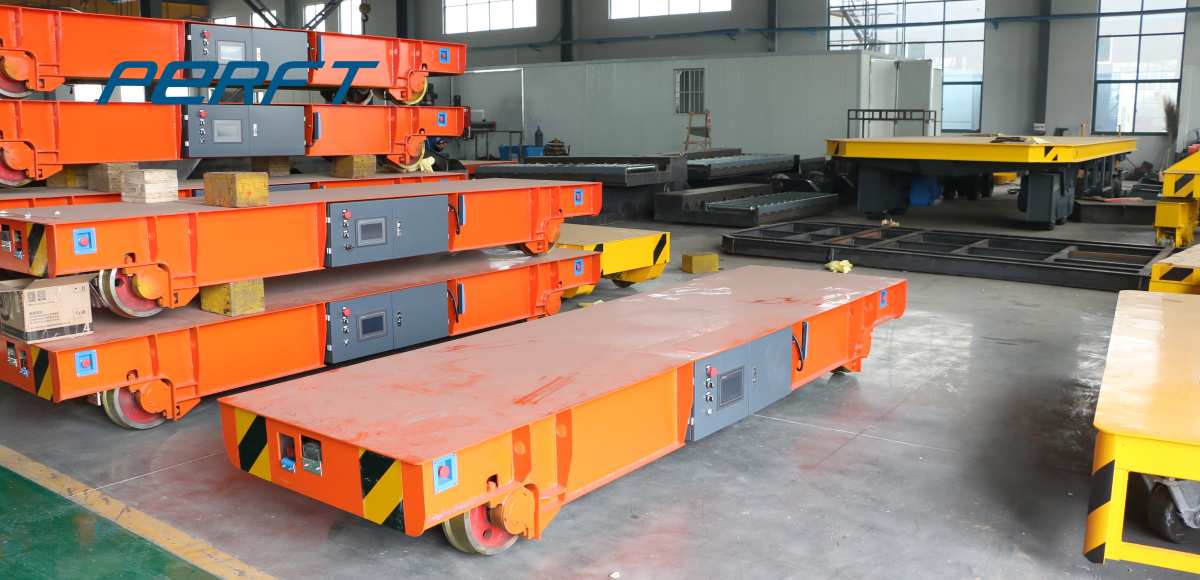
Relatively Low Cost
Compared with some transport equipment with a higher degree of automation, the construction of cable rail electric cart is relatively simple. The complexity of its mechanical components and electrical control system is low, which makes it more advantageous in terms of equipment procurement and maintenance costs. For some small and medium-sized enterprises (SMEs), this lower cost can reduce the financial pressure to a certain extent.
Better Adaptability
It can be customised to a certain extent according to different working environments and transport requirements. For example, the size of rail transfer trolley can be adjusted to accommodate different sizes of goods, and the running speed can be changed to meet different production beats. At the same time, it is not particularly demanding on the working environment, in the general industrial plant environment can work normally.
Easy to Operate
Its operation is relatively simple and easy to understand. General operators, after simple training,g can master the start, stop, forward, backward and other basic operations of trailing cable powered transfer cart. This can reduce staff training costs and time for enterprises.
15 Ton Rail Ladle Cart Video
Disadvantages of Trailing Cable Powered Transfer Cart
Limited Flexibility
Since it runs along a fixed track, it runs on a relatively fixed route. Once the track has been laid, it is difficult for electric flat cart to deviate from the established route. This can make it less flexible in situations where the production layout needs to be adjusted frequently or where there are temporary transport tasks. For example, if a new production line is to be added to a factory and the track is not extended there, it would be difficult to transport materials directly to the new production line with a cable drag rail transfer trolley.
Cable Drag Problems
Cable drag requires a cable connection for the power supply. During the frequent movement of transport carriage, the cable is prone to wear and tear, pulling and other conditions. Damage to the cable not only affects the normal operation of motorized cart, but also poses certain safety hazards, such as power leakage. Moreover, the presence of cables to a certain extent also limits the range of activities of motorized cart, and requires regular inspection and maintenance of the cables.
Limited Automation
The degree of automation of this type of rail transfer trolley is relatively low. It usually requires manual operation to control its operation, and cannot achieve automatic scheduling, automatic obstacle avoidance, and other functions like some intelligent AGVs (automatic guided vehicles). In a modern intelligent manufacturing workshop, this lower degree of automation may affect the intelligence level of the whole production process.
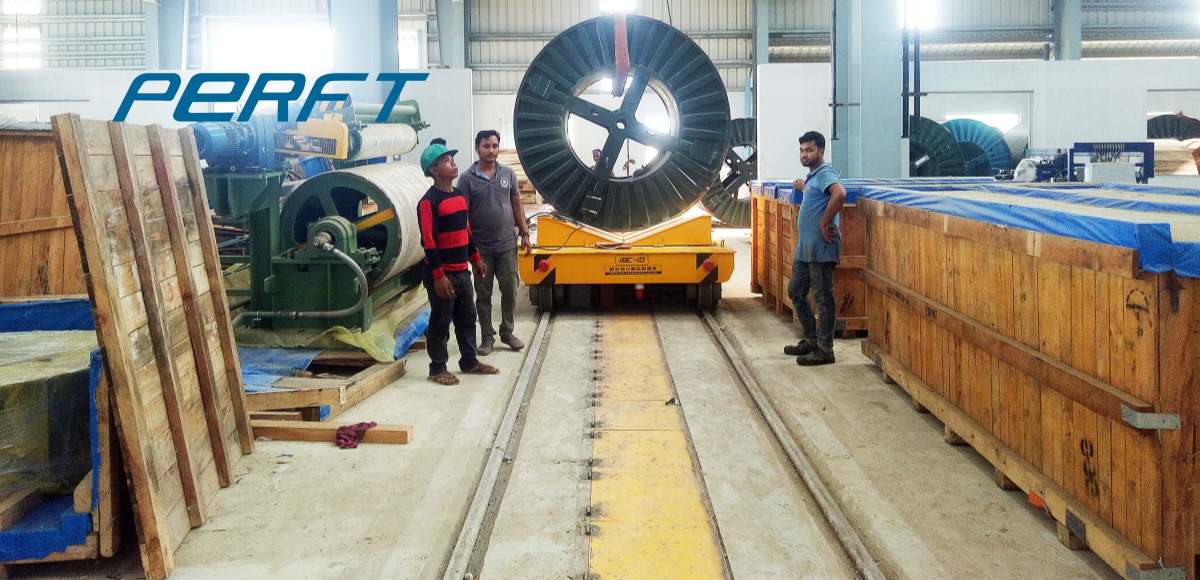
Applicable Scenarios of Trailing Cable Powered Transfer Cart
Production Line for Batch Material Transport
In the production line of automobile manufacturing, home appliance manufacturing, and other industries, a large number of parts need to be transported from the warehouse to each station of the production line, and trailing cable powered transfer trolley is a good choice. For example, in the automobile production line, it can transport the engine, seats, and other parts to the assembly station on time and steadily. As the material transport routes of these production lines are relatively fixed, and the requirements for stability and accuracy of transport are high, rail transfer trolley can well meet these needs.
Workshop for Heavy Duty Material Transport
For some workshops that mainly process heavy metal materials, large wood, etc., heavier raw materials and finished products need to be transported. For example, in a forging workshop, heavy steel billets have to be carried; in a wood processing workshop, large logs and planks have to be transported. The high loading capacity of rail transfer trolley can well complete these heavy transport tasks, and its stable operation can ensure the safety of heavy objects in the transport process.
Internal Transport in Logistics Warehouses
In logistics warehouses, when the goods need to be transported between different areas of the warehouse over short distances and regularly, trailing cable powered transfer trolley can play a role. It can transport goods from the receiving area to the storage area or from the storage area to the dispatch area according to a fixed route. Its low cost is also in line with the logistics warehouse’s considerations for equipment purchasing and operating costs.
